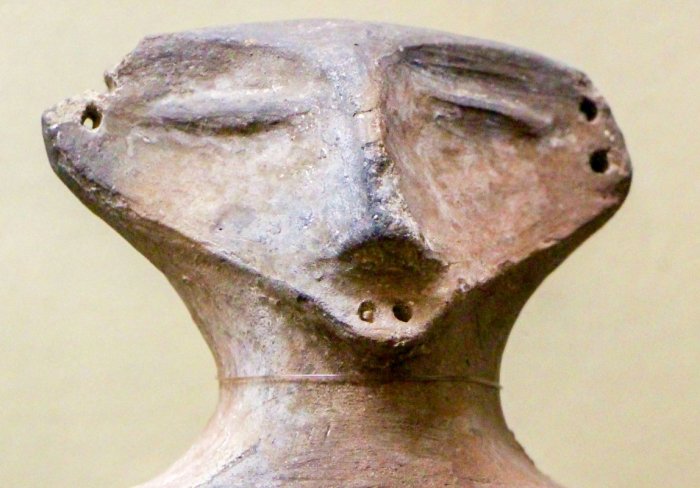A. Sutherland – AncientPages.com – More and more evidence confirms a very brave thesis: the Balkan Peninsula, rather than ancient Mesopotamia, is the cradle of our civilization.
The evidence of a little-known culture preceding Egyptian and even Sumerian culture has been attracting the attention of researchers, turning everything we know about antiquity upside down.

Tell Yunatsite – Image credit: Ivan Vasilev – CC BY-SA 4.0
Remains of this ancient society had gradually emerged from the ashes of human history, taking us some 6-7 millennia back when a highly advanced unknown civilization flourished in our lands.
This period preceded Sumer and Akkad by at least one millennium.
A vivid testimonial to the existence of this mysterious civilization is the gold from the Chalcolithic Necropolis of Varna (from 4,400-4,100 BC), also known as the oldest processed gold in the world. The earliest traces of human habitation in this region date back to the Old Stone Age, 100,000 years ago.

Image credit: Balkan Heritage Field School: Tell Yunatsite (2013)
Today the magnificent golden relics from the region are admired at some of the most famous museums in the world. The prehistoric settlement near Provadia (Southeastern Bulgaria) dates back to the same period.
Another old place was the so-called Lake Town, situated on the island near the coastal village of Durankulak, where the remains of the oldest stone architecture in Europe were found. It was unearthed near an ancient Black Sea salt pan. Its residents prospered due to the salt, once the basic monetary unit.
It is at least 7,000 years old.

Image credit: Balkan Heritage Field School: Tell Yunatsite (2013)
The village mound near the city of Pazardjik (southern Bulgaria) named “Yunatsite” (which means ‘the Heroes’) also dates back to that period. Archeologists have been researching this region for years and have found numerous traces of the Chalcolithic period.
Researchers led by Professor Yavor Boyadzhiev are unearthing a four-meter thick fortress wall, which once encircled streets, residential buildings, etc. Researchers believe the place could be the oldest town in Europe. The earliest finds from the mound date back to the 5th millennium BC. The city covered an area of 12-15 hectares. Interestingly, settlements of similar size emerged in the lands between the Euphrates and Tigris rivers some 1,500 years later.

Researchers excavated Mesopotamia’s settlements covering an area of 0.7- 0.8 hectares, and these ancient sites are considered towns, according to Boyadzhiev.
“Judging even by Mesopotamian standards, what we have here is an ancient town. The town elite and all craftsmen used to live there. We discovered a big settlement with a citadel at its highest point, the principle on which any ancient town was constructed – the existence of a fortified area inside the town that had to protect its population in the event of an emergency.

The team of ᴀss. Prof. Boyadzhiev reached the doorway to the citadel. Image credit: Balkan Heritage Field School and Workshops
At the “Yunatsite” ancient complex, we found evidence of a very advanced culture that existed ages before the emergence of the oldest towns we know about. This is an incredible historical monument where life continued from the 5th millennium BC until the Medieval Period, i.e., covering six whole millennia!”

What did this ancient town look like? Archeologists suppose that its inhabitants were mainly living on fishing in the Topolnitsa River nearby, and lived “in cozy houses made of wooden fencing plastered up with clay, rather than in huts. Their homes covered an area of 80-120 square meters. There were two-story buildings, too.

Image credit: Balkan Heritage Field School and Workshops
Archaeologists unearthed ceramic fragments at the site of the excavations.
“These houses did not differ much from the ones built in Bulgarian villages 70-80 years ago,” ᴀssociate Professor Boyadzhiev explains. The ceramic pieces found here, including dozens of fantastic figurines of birds, were displayed at the Museum of History in the town of Pazardzjik…”, according to source.
Updated on November 5, 2023
Written by A. Sutherland – AncientPages.com
Copyright © AncientPages.com All rights reserved. This material may not be published, broadcast, rewritten or redistributed in whole or part without the express written permission of AncientPages.com
Expand for references
References:
Balkan Heritage Field School and Workshops
Balkan Heritage Field School and Workshops





